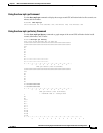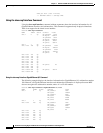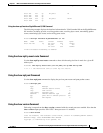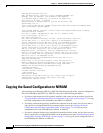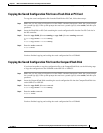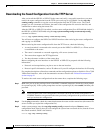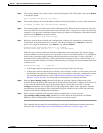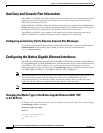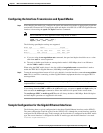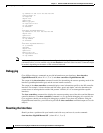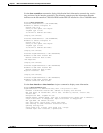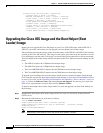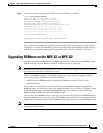
7-56
Network Processing Engine and Network Services Engine Installation and Configuration
OL-4448-12
Chapter 7 NPE-G1 and NPE-G2 Installation and Configuration Information
Auxiliary and Console Port Information
Auxiliary and Console Port Information
If the NPE-G1 or NPE-G2 and an I/O controller are both installed in the same system, the console and
auxiliary ports on the I/O controller are used and the console and auxiliary ports on the NPE-G1 or
NPE-G2 are disabled by Cisco
IOS.
Both the NPE-G1 or NPE-G2 and the I/O controller console ports are available from the ROM monitor
(ROMmon); however, once the system has completed loading the Cisco
IOS image, the console port on
the NPE-G1 or NPE-G2 is disabled if an I/O controller is also installed in the router.
If the NPE-G1 or NPE-G2 is used without an I/O controller, the console and auxiliary ports on the
NPE-G1 or NPE-G2 are available both during and after loading the Cisco
IOS image.
Configuring an Auxiliary Port to Receive Console Port Messages
If you choose to have console port messages routed to the auxiliary port, use the Cisco IOS command
terminal monitor on the auxiliary port on which you desire to receive console messages.
Router# terminal monitor
Configuring the Native Gigabit Ethernet Interfaces
The NPE-G1 and NPE-G2 report both the RJ-45 and GBIC or SFP GE interface ports as GigabitEthernet
0/1, GigabitEthernet 0/2, and GigabitEthernet 0/3. Each interface has two ports with two different media
types, GBIC or SFP, or RJ-45 (default). You can use only one port for each interface, and before
configuring either port type, you must first use the media-type interface command to select the media
type, GBIC (gbic) for NPE-G1 or SFP (sfp) for NPE-G2, or RJ-45 (rj45) port.
Note The Gigabit Ethernet interfaces on the NPE-G1 and NPE-G2 do not support the Inter-Switch Link (ISL)
VLAN encapsulation protocol. We recommend that customers use the IEEE 802.1Q VLAN
encapsulation protocol as an alternative. Where an application requires the use of ISL, this can be
provided by the Fast Ethernet or Gigabit Ethernet port adapters or I/O controllers.
Note The RJ-45 port is the default media.
Changing the Media Type of the Native Gigabit Ethernet GBIC, SFP,
or RJ-45 Ports
To be able to use a particular media port, use Cisco IOS to select the media type. This is done by using
the media-type interface command:
media-type { gbic | sfp | rj45 }
Example:
interface GigabitEthernet 0/1
media-type rj45
end




